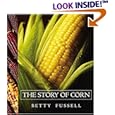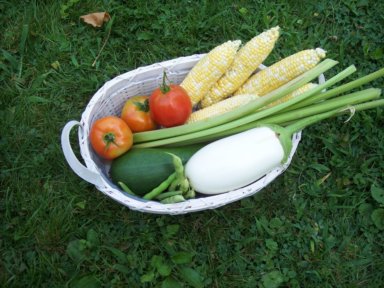 Nature has Superheroes and Villians. The Villians are the insects that munch on your plants, ruining all your hard work. The Superheroes are the insects that help the plants grow, and help keep the Villians away.
Nature has Superheroes and Villians. The Villians are the insects that munch on your plants, ruining all your hard work. The Superheroes are the insects that help the plants grow, and help keep the Villians away.On the left is a picture of our great-grandmother, Alice Rose's, Peonies. Peonies are a big double-petal flower that smells really great. Prior to the buds opening we have noticed that ants are busy crawling all over them. You can see them better in the picture below:
We thought at first that the ants were hurting the Peonies, but we have since learned that they're not Villians. They are Superheroes. Their job is to collect the sweet juice on the buds, perhaps helping them to open. Once the buds bloom most of the ants will go away.
What does this have to do with corn? We'll be using Superhero insects to help keep our garden organic. Once we know how much space our corn garden will take up we'll do some more math to figure out how many ladybugs we'll need. And no, not all ladybugs are girl bugs.

 Today our school science teacher, Mrs. Zea Mays, pulled up our blog, Cornnecticut Cornversation, and showed our classes using the "Smart Board." (A "Smart Board" is a big white board much like a really huge TV screen. You can write on it like a grease board using special markers.) We thought it was really cool that she did that -- and that a lot of our classmates expressed an interest in having their own garden. If they do, they'll learn it's a lot of work at first, but then, if you keep tending to it, it gets easier AND you get to eat the "fruits of your labor." (Our Pop likes that line!)
Today our school science teacher, Mrs. Zea Mays, pulled up our blog, Cornnecticut Cornversation, and showed our classes using the "Smart Board." (A "Smart Board" is a big white board much like a really huge TV screen. You can write on it like a grease board using special markers.) We thought it was really cool that she did that -- and that a lot of our classmates expressed an interest in having their own garden. If they do, they'll learn it's a lot of work at first, but then, if you keep tending to it, it gets easier AND you get to eat the "fruits of your labor." (Our Pop likes that line!)

 More bad news. Well, not really. But it does change our project a little: Mom & Pop went shopping at Lowes and found us another packet of seeds. It's called "Ruby Corn." If we plant all the packet of seeds we have now, that would make it 26!
More bad news. Well, not really. But it does change our project a little: Mom & Pop went shopping at Lowes and found us another packet of seeds. It's called "Ruby Corn." If we plant all the packet of seeds we have now, that would make it 26! 



 Last year my sister and I had our first vegetable garden. We grew tomatoes, eggplant, carrots, lettuce, squash, zucchini, green beans, broccoli, cucumbers, rhubarb, and corn.
Last year my sister and I had our first vegetable garden. We grew tomatoes, eggplant, carrots, lettuce, squash, zucchini, green beans, broccoli, cucumbers, rhubarb, and corn.